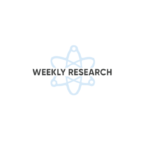Early intervention telehealth and remote patient monitoring (RPM) technologies are increasingly important in delivering healthcare services. The convenience and accessibility of telehealth technologies make it easier for patients to receive medical attention. This week’s summary includes studies that explore the effectiveness of RPM and early telehealth intervention for patients with heart failure, lung cancer, and other chronic care conditions.
1) Early Intervention Telehealth – Systematic Review Identifying Adverse Health Outcomes and Mortality Rates Associated with Telehealth
A systematic review and meta-analysis were conducted to evaluate the risks of adverse events associated with early intervention telehealth services. The review included 78 studies. The early intervention telehealth techniques were associated with a 40% lower mortality risk among heart failure patients than those who used traditional care.
In addition, patients with heart implants who used telemonitoring had a 35% lower mortality risk than those receiving traditional care. While the review suggests enhanced patient outcomes, the heterogeneity of the research questions emphasizes the need for more complementary studies with consistent outcome assessments.
2) The Role of Virtual Consulting in Developing Environmentally Sustainable Health Care
Early intervention telehealth is made possible through technology using remote patient monitoring devices and telehealth platforms. A review of 1672 papers on telehealth consults reported 23 articles that examined the ecological sustainability potential of equipment and platforms across various clinical conditions and services. All the papers unanimously reported reduced carbon emissions from reduced travel.
However, the methods and assumptions used to determine carbon savings differed across the papers, limiting the potential for comparison. Despite methodological inconsistencies, all reports concluded that telehealth consulting significantly reduced carbon emissions. However, the review found limited consideration of broader factors, such as patient suitability, clinical indication, and organizational infrastructure, which influence the adoption, use, and spread of virtual consultations and the carbon footprint of the entire clinical pathway.
3) Early Intervention Telehealth Heart Failure in a Remote Region
The article discusses a study on using remote monitoring systems in heart failure patients with cardiac implantable electronic devices. The multicenter cohort study involved 211 heart failure patients with cardiac implantable electronic devices (CIEDs) between 2010 and 2020. The study population was divided into two groups. Group A included patients with remote patient monitoring data. Group B included patients who received usual care at regular hospital consultations.
Early intervention virtual cardiology technology was used to assess the risk of worsening heart failure and establish an alert threshold using different parameters. While remote monitoring allowed for early detection of arrhythmic events, it did not result in fewer emergency department admissions or heart failure hospitalizations due to decompensation. However, patients who received remote monitoring had lower all-cause and cardiovascular mortality rates than those who did not. The study concludes that more data on the ideal tracking algorithms for remote monitoring systems is needed.
4) Improving the Understanding and Managing of the Quality of Life of Patients With Lung Cancer
A recent review article aimed to assess the use and implementation of electronic patient-reported outcome measures (ePROMs) in daily clinical practice. The study considered published between 2017 and 2022 and reviewed 12 articles after applying exclusion criteria. The review found that ePROMs are an effective tool for improving physician-patient communication, assessing patient symptoms and functionality more accurately, and facilitating clinical decision-making. ePROMs also allow for more precise predictions of overall patient survival and the adverse effects of treatments.
The review suggests that routine collection of remote ePROMs is an effective and valuable strategy for providing real-time clinical feedback and patient satisfaction, especially in patients with lung cancer. However, barriers to using ePROMs include cost, complex programming within health systems, safety, social and health literacy, and data privacy and security concerns. The review calls for more complementary studies to optimize ePROMs in clinical practice and overcome institutional barriers to implementation.
Early Intervention Telehealth Updates
Stay current on the latest findings in early intervention telehealth applications with Tenovi. We provide valuable insights for healthcare companies seeking to improve their remote patient monitoring services and offerings. Companies looking to implement or enhance their chronic care, telehealth, and remote patient monitoring services can benefit from working with Tenovi. Tenovi provides a wealth of knowledge and expertise to ensure success in this rapidly evolving field. Visit Tenovi to schedule a free demo today.






